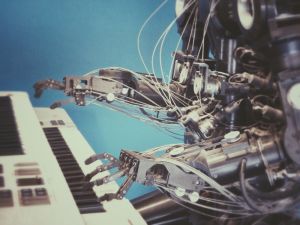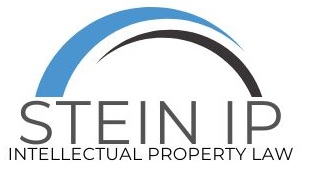- HOME
- > Blog Main Page
- > Trends in Artificial Intelligence at the USPTO
Trends in Artificial Intelligence at the USPTO
By Tuong Pham
The United States Patent and Trademark Office (USPTO) released a benchmark study on October 27, 2020, titled “Inventing AI: Tracing the diffusion of artificial intelligence with U.S. patents.”[1] The report used a machine learning artificial intelligence (AI) algorithm to examine AI technologies in US patents from 1976 to 2018. The specific AI algorithm “flexibly learns from the text of patent documents without being overly constrained by specific classifications and keywords.”[2] After using the AI algorithm, the results were manually reviewed by patent examiners. 
The USPTO defines AI in the study as comprising one or more of planning/controlling, knowledge processing, vision, machine learning, natural language processing, evolutionary computation, AI hardware, and/or speech.” The number of AI patent applications has steadily increased during the studied time period, but with the passage of the American Inventors Protection Act (AIPA) in 1999, the amount of applications has more than doubled. The percentage of AI patents increased from 9% of all patent applications in 2002 to almost 16% of all patent applications in 2018. Most of the AI patents were for planning/control and knowledge processing.
The study examined AI technology diffusion across technologies, inventors, and geography. The USPTO assigns patent applications into specific groupings consisting of more than 600 subclasses based on subject matter. In 1976, AI technologies only appeared in 10% of the subclasses, but by 2018 they appeared in more than 42% of the subclasses. Over time, the percentage of inventors using AI in their granted patents has increased as well from 1% in 1997 to 25% by 2018. IBM currently holds the most AI patents and the top AI patent holders are generally in the information and communication industries.
In terms of geography, the diffusion of AI patent technologies has increased since 2001. Between 1976-2000, most AI patentees were in large cities such as Silicon Valley, due to the resource advantages for developing technologies held by successful companies and research universities. After 2001, AI patented technologies are diffusing across the US. For example, North Dakota applies AI technologies to agricultural fields. Maine and South Carolina apply AI technologies in data processes for businesses. Oregon has inventors using AI for fitness training and equipment. Montana has inventors for analyzing the chemical and physical properties of materials. The Midwest is slowly adopting more AI patents. Wisconsin has inventors for medical instruments and processes. North Dakota has inventors for AI technologies for agriculture. AI patented technologies are moving away from primarily large cities to across the country.
The study concludes with the fact that AI is becoming increasingly important for US inventions with the potential to be as revolutionary as electricity. The growth of AI patents is not limited to the United States, but Europe Patent Office has noted that AI was one of the most prevalent fields for patent applications in 2019.[3] As the expansion of AI patented technologies continues to grow, AI has the potential to radically change the world.
[1] United States Patent and Trademark Office: Office of the Chief Economist, Inventing AI: Tracing the Diffusion of Artificial Intelligence with U.S. Patents. IP Data Highlights (October 2020).
[2] Id.
[3] Catherine, Cotter, Digital Technologies Take Top Spot in EU Patent Applications in 2019. https://thelens.slaughterandmay.com/post/102g1n7/digital-technologies-take-top-spot-in-eu-patent-applications-in-2019 (March 2020).

TAGS:
